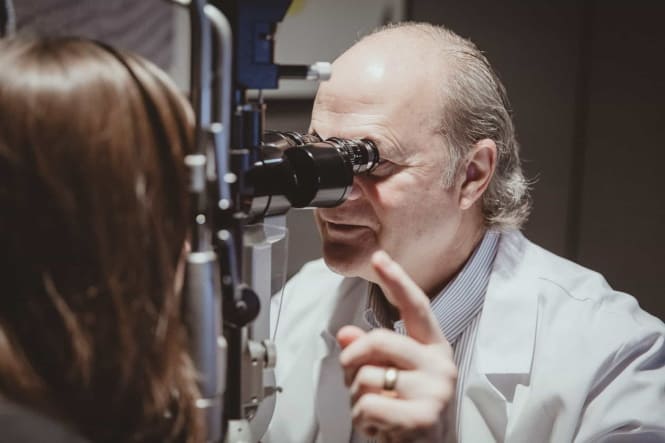Cataracts are most commonly a result of an aging lens. Over time, the lens becomes cloudy and yellow, producing visual symptoms only correctable through replacement of the lens, which is cataract surgery. In the United States, cataracts affect 24.4 million people over the age of 40, with 3.8 million undergoing surgery every year.
At Durrie Vision, we believe educating our patients about how vision works and what is changing with the eyes over time empowers them to make the best decision to see well over their lifetime. Recognizing early symptoms of cataracts is one way to minimize their negative affect on vision, as we can treat the cataract early and avoid further deterioration of vision.
Read on to learn more about six early symptoms of cataracts.
- Cloudy vision: Cataracts decrease the transmission of light to the retina and can make the vision appear generally foggy, less bold or crisp, and less bright.
- Halos and glare: Early peripheral layering of the lens will often cause glare and halo around lights at night or in bright morning or afternoon sun, when light is coming from a more direct angle relative to your line of sight.
- Difficulty seeing at night: Lens clarity will challenge reading in dim light or at night, night driving (from glare)
- Change in color perception: As the lens ages, it gains yellow discoloration, which acts like a filter, making whites appear dingy and colors less vibrant.
- Changing prescription: As the lens density changes through the 50’s and beyond, the power of the lens will often shift as well, causing your prescription to change, both in terms of distance and near correction.
- Ghosting around lights: Light traveling through the clouding lens will scatter and fail to reach the retina in focus, causing a ghosting effect around letters and lights, sometimes significant enough to cause a double image.
Learn more about early cataracts at Durrie Vision
Our primary goal is to help our patients experience life with the best vision possible. The first step in that process is a comprehensive examination. We begin the process with our signature exam, the Advanced Ocular Analysis. During your AOA we will perform a series of in-depth, advanced diagnostic tests. Following the testing, a surgeon will examine your eyes, review the tests and recommend a customized plan to help you reach your visual goals.
As a refractive surgery practice, we perform all seven of the procedures in Refractive Surgery, from laser vision correction to lens implantation. No matter the procedure, we use innovative technology to maximize precision and tailor the treatment to your specific optics. Our expert staff is here to provide superior service from the first consultation throughout the process of surgery and beyond.
For over 20 years, the doctors at Durrie Vision have been leaders in refractive surgery, specializing in the most-advanced techniques in vision correction. To get started, schedule your AOA or take our easy, online self-candidacy test.

